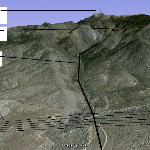Please find below the
Finalist Evaluation
Judges'' comments
SUBJECT: Climate CoLab Judging Results
Proposal: Use Warm Air to Create Electricity
Thank you for participating in the 2015 Climate CoLab Energy Supply contest, and for the time you spent in creating and revising your entry.
The Judges have strongly considered your proposal in this second round of evaluation, and have chosen to not advance it as a Finalist for this contest.
We, the Judges and contest Fellows, are truly grateful for your contribution to the Climate CoLab and for your commitment to address climate change.
We encourage you to keep developing your work. Transfer it to the Proposal Workspace to re-open it, make edits, add collaborators, and even submit it into a future contest. You can do so by logging into your account, opening your proposal, selecting the Admin tab, and clicking “Move proposal”.
We hope you will stay involved in the Climate CoLab community. Please support and comment on proposals that have been named Finalists and vote for which proposal you would like to be nominated as the contest’s Popular Choice Winner.
If you have questions, please contact the Climate CoLab staff at admin@climatecolab.org
Keep up the great work. And thank you again for being a part of this mission to harness the world’s collective efforts to develop and share innovative climate change solutions.
2015 Climate CoLab Judges
Additional comments from the Judges:
Comment 1:
Interesting idea but with unclear economics. No significant changes made from first submission in response to Judges feedback.
Comment 2:
While a warm air chimney can generate electricity, I was unconvinced by the proposal that it would be competitive with other low carbon options. Here are some reasons why:
1. There was almost no quantitative data in the proposal. What is the system efficiency (i.e., fraction of the solar radiation turned into electricity)? How does that compare to PV?
2. My understanding is that the friction loss goes as the square of the velocity, not the fourth power as claimed in the proposal.
3. The claim that one can have a GW size chimney is unsubstantiated. What land area for solar collection is required? Is it realistic to put in generating equipment that large on a mountaintop?
4. What about environmental considerations? It is hard to site wind farms on mountain ridges. I would think these chimneys will run into the same obstacles.
5. The issues of getting the electricity to markets was not discussed. This could add significant costs if desert mountains are the best sites for this technology.
Comment 3:
Interesting idea, however, uncertain about the benefits and little adaptation from previous round to improve understanding and make more compelling.
Comment 4:
The proposal is not written coherently enough to clearly articulate the system design, the potential performance and economic advantages, or the technical challenges. The proposal team appears confident that they have a climate solution and only needs funding, though I remain unconvinced that a conceptual design has been fully developed and analyzed. I recommend that the proposal team make another attempt at creating a technical and business case for their approach while identifying technical challenges that need to be addressed during the development phase.
Semi-Finalist Evaluation
Judges'' ratings
| • | Novelty: | |
| • | Feasibility: | |
| • | Impact: | |
| • | Presentation: |
Judges'' comments
An interesting idea that has limitation in the potential application. We would recommend altering the voice of the proposal to be a bit more succinct and with less commentary
Solar updraft chimneys can convert warm air to electricity even if the other two part of the paradigm need to be further explored: "can be incredibly inexpensive" and "zero environmental issues".
On the economics, the outcome of a simple business plan is needed. The numbers mentioned in the comments do create some uncertainties as today solar or wind energy can already produce at lower cost/KWh with the appropriate conditions."I pencil in a cost of about $2,000,000 for the collector field, $500,000 for the tunnel and $400,000 for the generating equipment. Amortized over 20 years, the generator produces electricity at $.127 cents per kilowatt-hour, minus two cents per kwh = $.107 /kwh if the renewable energy credit is sold off. Everything but the generator is likely to last 50 years. If you can get a 5% loan, you're getting moderately dependable power for 11 cents per kwh." and then "My only cost comparison information is a probably optimistic projection from the Manzanares prototype. They expected a cost of $.25/kwh.
Going by their numbers, I'd have to lower the chimney cost and the collecting field cost by a factor of 5 to hit $.05/kwh," In the same way, the real impact on the environment needs to be evaluated once the economics are clearer.
In particular how tall should be the Chimneys to be competitive? Today one if the main issues with wind turbines is their height, increased year over year due to the need of reaching competitiveness versus other form of energy production.
No comments have been posted.
